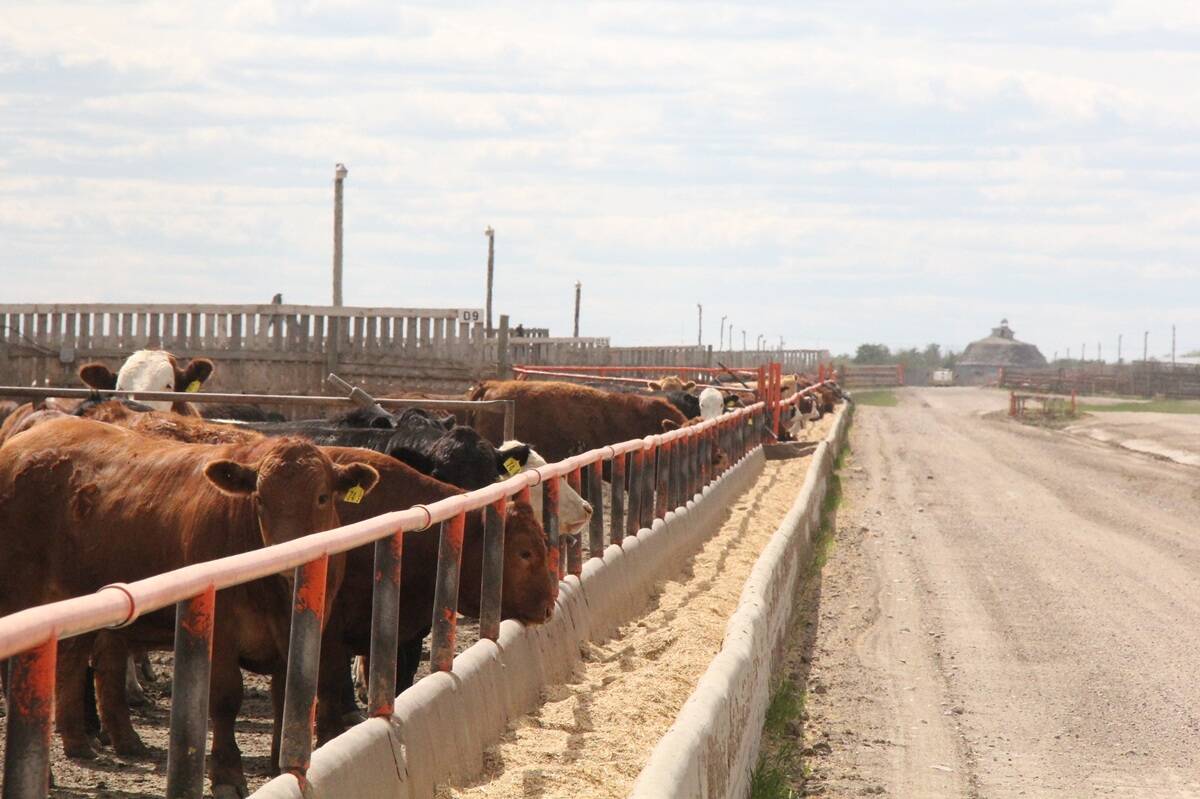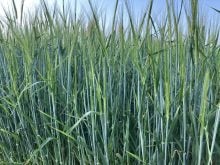Fed cattle
Fed cattle prices continue to set new records in 2023. Significant increases in exports led to current marketing positions for feedlots sooner than expected. Supplies are tight and carcass weights have dropped which has packers looking to secure inventory and cut back on kill days. In mid-May the fed steer average in Alberta was $231.45/cwt, 34 per cent higher than the same time last year. Since the start of 2023, the fed steer average has seen a 24 per cent improvement. Steer carcass weights dropped 12 lbs. since the start of April and were at an average of 900 lbs. which is 37 lbs. lighter than a year ago.
Cattle-on-feed numbers remain below a year ago. The Canfax on-feed report stated 966,117 head were on feed as of May 1, which is 11 per cent below last year and four per cent below the five-year average. Placement numbers thought April were reported to be down 29 per cent when compared to April 2022. Lower placement numbers, increased feeder exports and an already reduced on-feed total mean tight supplies ahead for the Canadian fed cattle market. Marketing through April was smaller as many feedlots marketed aggres- sively through the first quarter, leaving them light in front-end supplies.
Read Also

Unwinding the fibre in feedlot cattle diets
Research into how barley rolling method and undigestible NDF levels affect animal performance and digestive health in finishing diets
Smaller volumes also led to reduced kill shifts at packing plants. As of May 6, fed steer slaughter in Canada was down two per cent, totalling 556,380 head. Heifer kill was down 10 per cent at 358,966 head.
At the end of April, the four-month total for fed cattle exports was 177,575 head, virtually unchanged from a year earlier. However, the month of April saw an increase of eight per cent when compared to April 2022.
Deb’s outlook for fed cattle: This is the time of year fed cattle markets generally start to pull back. Spring highs are usually in and packers are looking at increased front-end supplies through the summer. However, supplies of market-ready fed cattle will remain tight over the next few weeks as calves grow, and feedlots are not eager to pull cattle ahead. Carcass weights should keep decreasing through much of June which will also support the market. Expect good price support in the near term as packers reach to meet their immediate needs. Further out, as the fall-placed calf numbers start to increase prices should see their seasonal decline. However, there may be less seasonal pressure than we have seen in previous years.
Feeder cattle
Grass conditions across the Prairies vary greatly as moisture has been spotty and some areas remain very dry. Additional feeder availability has come from producers taking another cut out of their female replacement or home-raised grassers due to poor pasture conditions and summer pasture concerns.
Fortunately for those forced situations, feeder prices are strong relative to recent years. Lightweight calf prices have held mostly steady through May, close to annual highs. The average 550-lb. feeder steer price in mid-May was $344.67/cwt, $110.42/cwt higher than the same week in 2022.
Feeder cattle exports increased as the U.S. has the cost-of-gain advantage. Exports are still down 52 per cent when compared to last year. However, exports in April saw twice the number of feeders exported in March.
Heavier feeder prices have kept climbing since the start of the year. The average mid-May was $265.65/cwt which was $81.77/cwt higher than a year earlier and an increase of 12 per cent since the start of the year. The 850-lb. feeder basis narrowed to -$5.41/cwt in mid-May, $5.57/cwt stronger than a month earlier. Compared to 2022, the May basis is nearly $12/cwt narrower.
Deb’s outlook for feeder cattle: Positive profit margin in the fed sector, lower feed costs and tight supplies continue to fuel optimism for a strong feeder market moving forward. According to Canfax, feedlot utilization rates in May were the lowest seen in the past decade. At the same time new pens are being built. The pen space available this fall will create aggressive buyer competition and support the anticipated strong feeder market. In the near-term, prices on lighter feeder cattle will be well supported by seasonally smaller numbers as well as increased export interest. Heavier-weight feeders should continue to see price improvement in the coming weeks.
Non-fed cattle
Seasonal demand for lean grinding meat has driven cow prices to highs comparable to 2015 averages. Tighter cow supply coupled with strong demand led to a 60 per cent improvement in the D1,2 cow market from the first week of January to mid-May. The mid-May average D1,2 cow price in Western Canada was $149.70/cwt, down from the $150.21/cwt high set at the start of May. The mid-May average was $43.01/ cwt higher than the same week in 2022 and $55.77/cwt stronger than the five-year average. The Canadian D1,2 cow price was also nearly $20/cwt stronger than the U.S. utility cow market.
Cow slaughter in Canada is up seven per cent from a year ago at 180,258 head. Although domestic cow slaughter is larger, total cow marketings are not, as slaughter cow exports are considerably smaller than a year ago.
Butcher bull slaughter in mid-May was 20 per cent above a year earlier at 5,204 head. Exports as of April 29 were lower, down 10 per cent at 8,830 head. The slaughter bull average in Alberta was $156.28/cwt in mid-May. Last year, the bull average was $121.63/ cwt. during the same week in May.
Deb’s outlook for non-fed cattle: Demand for lean-grinding beef will support the non-fed market as we move through the second quarter. Seasonally barbeque demand hits when cow availability is at its lowest point of the year. Although supplies are currently small, pasture conditions may encourage the sale of more pairs in the coming month. Typically, when this happens due to dry conditions. many pairs are split and cull numbers grow. Hopefully, we will see widespread moisture and premiums due to tight cow numbers until seasonal fall run volumes increase.
















